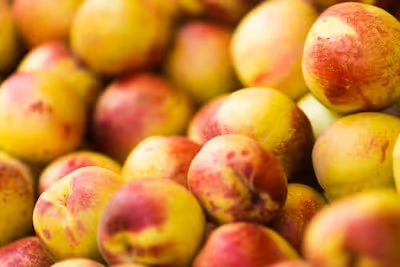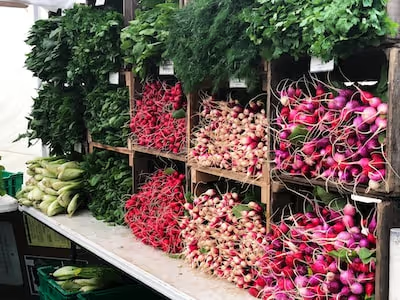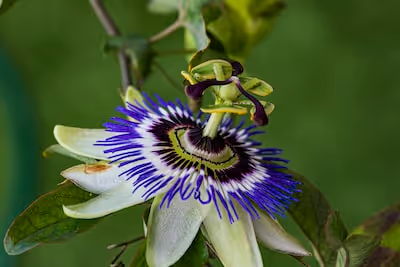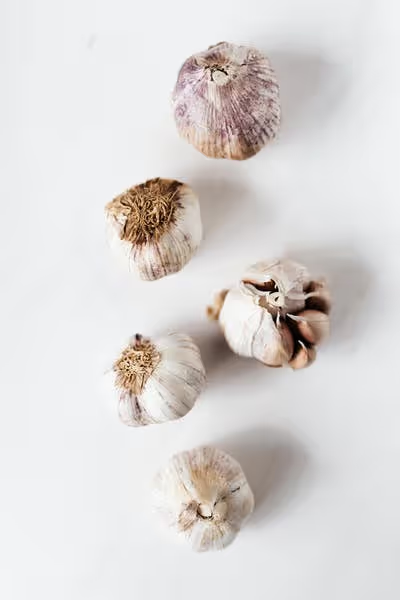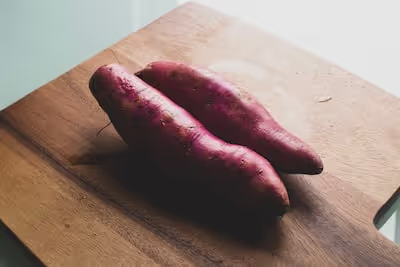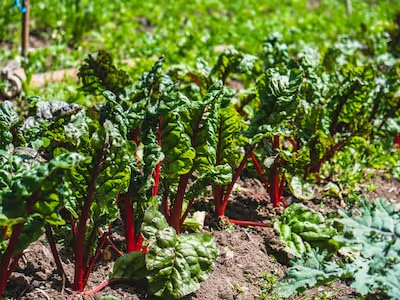Growing Sichuan Pepper at Home: A Simple Gardener's Guide
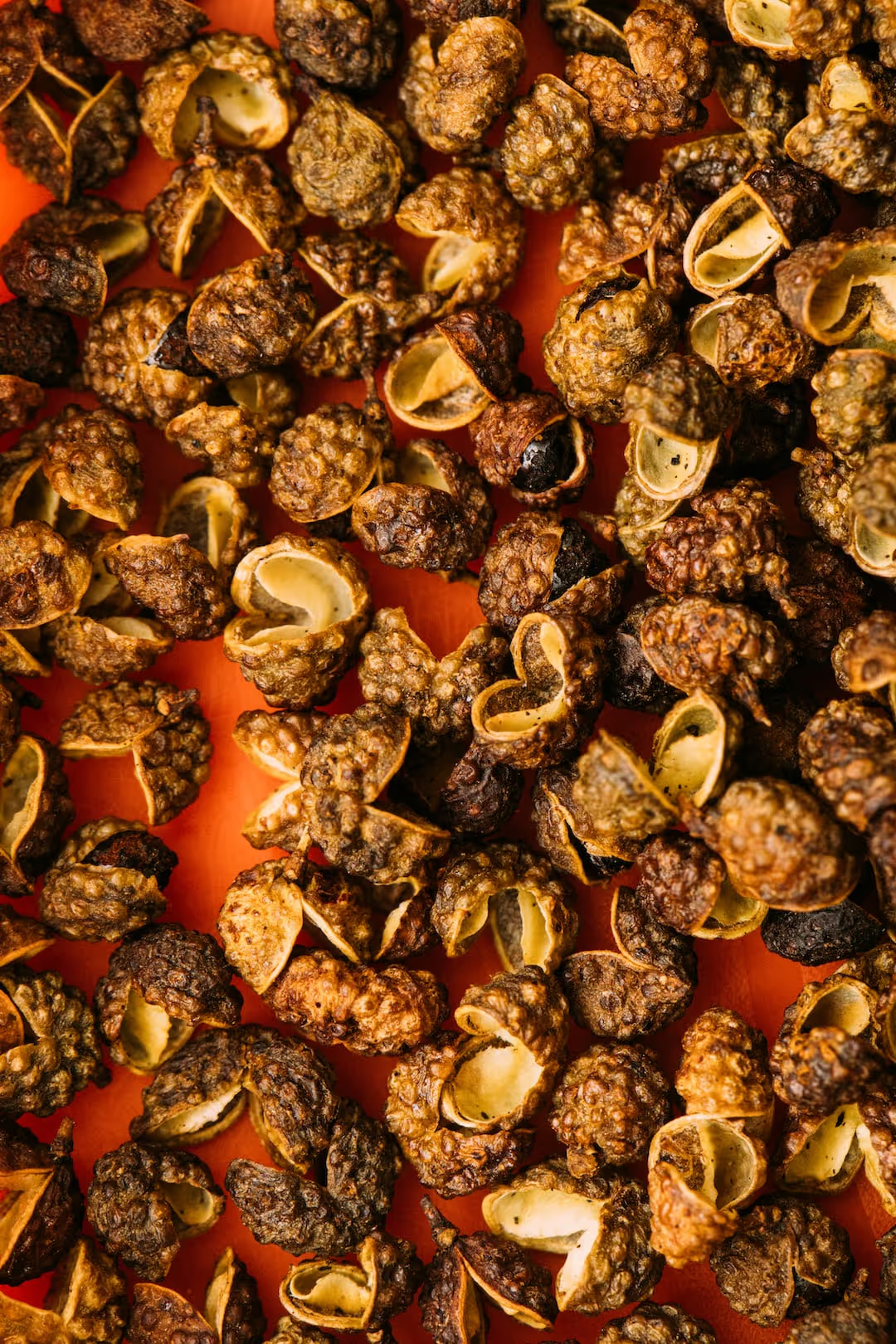
Growing Sichuan Pepper
Growing Sichuan pepper at home brings vibrant flavor to your dishes—and it's easier than you think. Start by sourcing fresh seeds or a sturdy sapling, plant it in well-drained soil with plenty of sunlight, and watch it thrive as you water sparingly. Prune lightly each spring, and soon you'll harvest aromatic husks that deliver the distinctive tongue-tingling heat prized by adventurous cooks and culinarians alike. Curious how to get started? Here's your straightforward guide to harvesting your own Sichuan pepper bounty.
Cheatsheet: Home-Grown Sichuan Pepper Success
🌱 Location & Soil
- Sun: 6+ hrs. daily
- Soil: Well-drained, sandy-loam, pH 5–7
- Space: 6–10 ft (2–3 m) apart
- Plant outside after last frost (zones 6–9)
🛠️ Tools and Products You'll Need
- Sichuan pepper seeds/saplings
- Compost or organic fertilizer
- Mulch
- Pruners
- Gloves (thorns present!)
- Well-draining pots (for containers)
💧 Water & Feeding
- Water deeply, weekly (1–2 in/2–5 cm)
- Keep moist, never soggy
- Feed in spring with compost
- Mulch to retain moisture
✂️ Pruning & Care
- Prune in dormancy for airflow
- Remove dead/diseased wood
- Tip: Control size with annual pruning
🪴 Container Growing
- Use 18"+ (45+cm) wide pots
- Repot every 2–3 years
- Ensure drainage holes
🌸 Flowering & Harvest
- Blooms: spring to early summer
- Female plants fruit (need a male nearby)
- Pick red husks late summer–fall
- Dry husks; discard gritty seeds
- Yields peak after 3–4 years
🦠 Pests & Disease
- Tolerates most pests
- Watch for aphids, scale; use neem oil if needed
- Good airflow prevents mildew
🥗 Health, Use & Self-Sufficiency
- Vitamin C, antioxidants
- Essential for numbing spice in Chinese cuisine
- Supports pollinators
- Drought-tolerant once established
- Start seeds indoors 2–3 months before last frost; soak seeds 24 hrs for best germination.
- Transplant seedlings outdoors after frost; ensure sun and well-drained soil.
- Water regularly, especially first year; mulch to conserve moisture.
- Feed annually with compost or balanced fertilizer each spring.
- Prune for airflow and shape during winter dormancy.
- Harvest peppercorns when red husks split, rinse, and dry.
-
Growing Sichuan Pepper at Home: the numbing shrub I never skip
Growing Sichuan Pepper starts with one fact that surprises most gardeners, it is a hardy, spiny citrus cousin that carries a lightning-bolt flavor in tiny red husks.
I planted my first Zanthoxylum a decade ago, and the first taste of fresh husks felt like club soda fizz meeting a tuning fork on the tongue.
Meet the plant
Sichuan pepper usually refers to Zanthoxylum simulans or Z. bungeanum, with Japanese sansho being Z. piperitum.
These shrubs or small trees reach 8 to 12 feet tall and wide, about 2.4 to 3.6 meters, with hooked thorns, aromatic leaves, and clusters of red pericarps that split to reveal glossy black seeds you do not use.
Why it tingles
The punch comes from hydroxy alpha sanshool, which tickles touch-receptor neurons rather than classic heat pathways.
I keep a small vial of my own dried husks on the prep shelf, and a single pinch wakes up a dish like flipping on stadium lights.
“Sanshool activates low-threshold mechanoreceptors to produce the signature tingling sensation,” reported Bautista et al., Proceedings of the National Academy of Sciences, 2008.
Climate and hardiness
In my gardens, Z. simulans shrugs off winter in USDA Zones 6 to 9, about minus 10 to 0 Fahrenheit or minus 23 to minus 18 Celsius with site and snow cover helping a lot.
Z. piperitum handles similar cold, while Z. bungeanum prefers a slightly warmer slot, and all appreciate shelter from brutal winter wind.
Site and soil
Give it full sun in cool regions or light afternoon shade in hot-summer areas, and it rewards you with flower set and heavier clusters.
Soil wants to drain, a loam or sandy loam with pH 6.0 to 7.5, and I add composted leaf mold and a sprinkle of rock dust to round out micronutrients.
Containers, for patios and renters
It behaves in a 15 to 25 gallon pot, about 57 to 95 liters, with a gritty, peat-free mix and a terracotta or fabric pot that breathes.
I up-pot once after year two, and keep the rootball slightly snug to encourage flowering instead of lanky growth.
Planting and pollination
Timing matters, I plant bare-root in early spring when soil hits 50 Fahrenheit or 10 Celsius, and container plants anytime spring through early fall.
Most Zanthoxylum are functionally dioecious, which means male and female flowers often occur on separate plants, so fruiting improves when you plant two or three.
Attract the matchmakers
Small, greenish flowers open in late spring, bees visit, fruit clusters size up through summer, and husks redden by late summer or early fall.
I underplant with alyssum and chives to pull in pollinators and to distract aphids.
Water and feeding
First year, keep soil evenly moist, about 1 inch or 25 millimeters per week, then shift to deep, infrequent soaks during heat spells.
I feed with an organic fertilizer around 4-3-3 in early spring, then a light top-up after flowering, and stop feeding by midsummer to harden wood for winter.
Pruning without bloodshed
I prune in late winter, removing crossing wood and opening the center like a goblet to light and airflow.
Wear leather gloves, the thorns hook like fish, and save pruned twigs for a citrusy smoke on the grill.
Cold, heat, and wind
In Zone 6, I mulch 3 inches or 7 to 8 centimeters out to the dripline and tie burlap around young trunks for the first two winters.
In hot valleys, a 30 percent shade cloth during 100 Fahrenheit or 38 Celsius heatwaves prevents leaf scorch and flower drop.
Pests and diseases
Aphids, citrus leaf miner, and spider mites show up on stressed plants, so I rinse with a sharp hose jet, release lacewings, and use light horticultural oil if needed.
Deer browse nearby shrubs, then glare at this one, thorns teach manners fast, and rodents rarely bother the aromatic bark.
A quick word on regulations and sanitation
Imported Sichuan peppercorns were restricted in the United States from 1968 to 2005 due to citrus canker concerns, then allowed if heat-treated, which tells you how seriously regulators treat Citrus relatives.
I clean pruners with 70 percent alcohol between plants and avoid moving fresh plant material from unknown sources, simple habits that prevent headaches.
“USDA APHIS permits heat-treated Sichuan peppercorns to mitigate citrus canker risk,” per agency guidance after the 2005 policy change.
Harvest and processing
Pick when husks blush red to crimson and begin to split, seeds turn jet black and hard, and fragrance jumps from the cluster.
I snip whole umbels with scissors, air-dry on mesh trays for 3 to 5 days, then shake out the seeds and keep only the papery husks.
Storage, flavor, and shelf life
Store dried husks in an airtight jar in a cool cupboard, and grind small batches before use to protect the citrus top notes.
Good stock tastes bright and electric for 6 to 9 months, after that it slides into flat and woody.
How long until you get spice
Seedlings fruit in 3 to 5 years, grafted plants in 2 to 3, and cropping improves with age and smart pruning.
My best year from a pair in 20 gallon pots, about 57 to 76 liters, filled three jam jars with dry husks, plenty for a household that cooks.
Culinary payoffs
I toast husks lightly until they smoke a whiff, then grind with sea salt for a finishing salt that sings on grilled eggplant and seared mushrooms.
Mix with chili flakes and toasted cumin for a fast mapo tofu rub, or stir into chili oil for dumplings that bite back.
Buying guide and top choices
Look for plants labeled Z. simulans or Z. bungeanum for classic Sichuan flavor, and Z. piperitum for Japanese sansho with greener, citron-leaf aromas.
Ask nurseries if the plant is male, female, or mixed flowering, if it is seed-grown or grafted, and what zone it was field-tested in.
- Z. simulans good cold tolerance, classic red husk, reliable bearer in Zones 6 to 9.
- Z. bungeanum warmer sites, intense aroma, slightly larger clusters.
- Z. piperitum sansho greener citrus notes, edible young leaves for kinome, terrific in containers.
- Z. schinifolium Korean pepper, milder, aromatic leaves, useful where summers run humid.
Container setup I use
Pot, 20 gallon or 76 liters, gritty bark-based mix, two tall stakes, and a low ring tie for the first windy season.
Fertilizer, slow-release organic prills in spring plus compost tea after bloom, then nothing past mid-July.
Companions and design
Pair with garlic chives, thyme, yarrow, and tansy to stack pollinators and keep sap-suckers guessing.
Its lacy canopy plays well against broad-leaf herbs, and the thorns make a quiet security hedge by the potting shed.
Troubleshooting quick fixes
- No fruit set, add a second plant for pollination, boost bees with blooms, skip late nitrogen.
- Leaves yellow, test pH, add chelated iron at pH above 7.5, improve drainage, and back off watering.
- Leaf curl with sticky residue, aphids, blast with water, follow with soap spray at dusk for 2 to 3 cycles.
- Winter dieback at tips, mulch, stop summer feeding earlier, prune to live buds in spring.
- Flavor bland, harvest at first split, toast lightly, and grind fresh, stale husks always disappoint.
Safety and handling
Thorns can pierce thin gloves, so use thick leather and carry pruners with tips down.
If kids or pets roam, site away from play paths and keep lower branches limbed up to eye level height.
Answers to questions I hear a lot
Can it grow indoors, yes under bright light by a south window or high-output LEDs, but outdoor summer vacations improve vigor and bloom.
Are there thornless types, I have not found truly thornless cultivars, young plants can be thornier than mature wood, so time helps.
Do I need two plants, one often fruits sporadically, two or three improve set and staggered bloom spreads the risk.
Can I grow from grocery store peppercorns, usually not viable after heat treatment, start from nursery stock or fresh seed from a grower.
Numbers and sources I trust
Royal Horticultural Society lists Zanthoxylum simulans as hardy with proper siting and notes the culinary use of husks.
Missouri Botanical Garden profiles Z. piperitum as a spiny shrub for sun to part shade with edible pericarps and aromatic foliage.
USDA APHIS documented the 1968 prohibition and the 2005 allowance of heat-treated peppercorns for plant health safety.
PNAS 2008 by Bautista and colleagues pinned the tingling to sanshool activation of touch receptors, which matches what cooks taste and gardeners smell in the oils.
Frequently Asked Questions About Growing Sichuan Pepper
What's the ideal environment for thriving Sichuan pepper plants at home?
Sichuan pepper plants live and breathe sunshine. Select a spot outdoors where they can soak up at least six hours of sun daily or position them near a bright, south-facing window indoors. These botanical thrill-seekers prefer well-draining, slightly alkaline soil to flourish into pungent abundance.
How often should I water my Sichuan pepper plant?
Sichuan pepper plants dislike damp feet. Ensure you water them deeply yet infrequently—letting soil partially dry between waterings. Regular touch-tests are your allies; poke your finger into the first two inches of soil and water only if it's dry.
Does Sichuan pepper require pruning or special maintenance?
Pruning keeps Sichuan pepper bushes vigorous and encourages ample fruit production. Snip away weak or damaged branches in early spring, shaping them subtly to enhance airflow and sunlight penetration. Occasional mulching ensures a moisture-stable soil environment, aiding their flavorful evolution.
When is the right time to harvest Sichuan pepper?
The berries announce themselves with color changes, transitioning from green to reddish-brown clusters signaling ripeness—usually late summer through autumn. Harvest them while vibrant and sun-dry them to coax out that sought-after numb-spice punch.
Are there pests or plant diseases to watch out for?
Aphids and spider mites occasionally trespass upon Sichuan pepper territory. Inspect plants regularly, blasting any interlopers with water or employing organic insecticidal soaps if necessary. Keeping plants appropriately spaced and well-ventilated deters most fungi and unwanted microbial interlopers.
How long until Sichuan pepper plants produce berries?
Patience rewards the visionary gardener. Healthy Sichuan pepper saplings start bearing fruit typically within two to three years after planting. Expect abundant harvests and increasing yields as your plant matures season after spicy season.
Growing Sichuan Pepper brings a little wildness and plenty of reward to your backyard. These scrappy shrubs ask for sunlight, good drainage, and a bit of patience. Give them time—prickly branches and aromatic husks will show you it was worth the wait. The zingy, citrus-spiced husks top off any homemade dish, fresh from your own garden.
Remember: prune well, watch for thorns, and keep an eye on those glossy leaves. When autumn comes, harvest the red husks and let your cooking travel somewhere new. If you’re hungry for more rare flavors, explore perilla or jalapeño peppers for another twist in your garden plot. Sichuan pepper thrives on tough love, but with a steady hand, it’ll turn your patch into something unforgettable.
The Prepper's Guide to Cultivating Sichuan Pepper for Food Security
Self-Sufficiency Benefits
- Perennial Productivity: Set once, harvest annually for up to 20 years, ensuring continual spice supply without yearly replanting.
- Nutritional Edge: Sichuan pepper berries contain antioxidants, iron, potassium, and zinc, adding important micronutrients to home-grown diets.
- Medicinal Properties: Traditionally used for digestive health, oral health, and anti-inflammatory purposes, enhancing home healthcare solutions.
Sustainable Cultivation Practices
- Permaculture Integration: Plant alongside nitrogen-fixing legumes to improve soil fertility without costly fertilizers.
- Low Water Demand: Requires minimal watering after established, approximately 1-inch (2.5 cm) rain per week, reducing water usage and cost.
- Hardiness Advantage: Tolerates cold temperatures down to -4°F (-20°C), making it resilient in diverse climates and reducing the need for greenhouse cultivation.
Harvest and Preservation
- Efficient Harvest: Dry ripe berries naturally on trays or hang indoors, ready within 2 weeks, eliminating energy-intensive drying methods.
- Long-term Storage: Store dried peppers sealed in cool, dark conditions for up to 2 years, preserving flavor and nutritional content effectively.
Useful Stats to Remember
- Yield Efficiency: A mature Sichuan pepper shrub yields 4.5–11 lbs (2–5 kg) of dried peppercorns annually.
- Spice Shelf-life: Properly stored dried peppercorns retain potency upwards of 24 months.
- Mature Height: Reaches manageable heights of 6–10 feet (1.8–3 m), ideal for small-scale home growing.
Find out which plants will thrive in your garden!
Answer a few fun questions and get custom plant recommendations perfect for your space. Let’s grow something amazing together!

start your season
